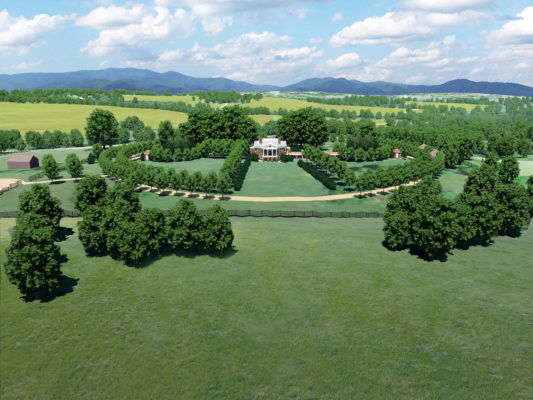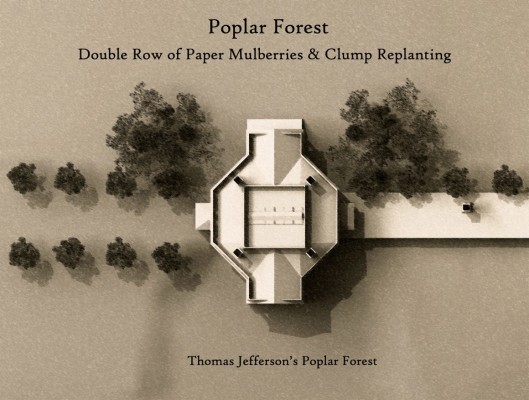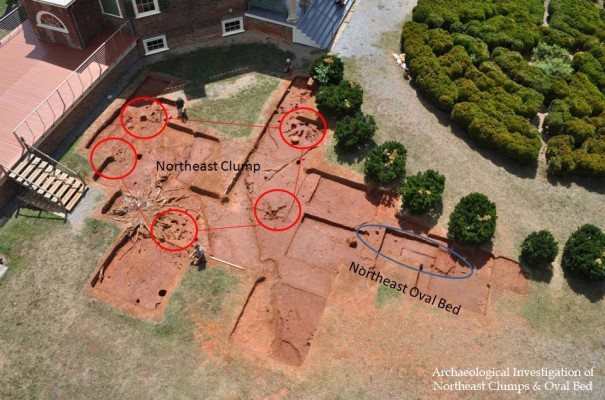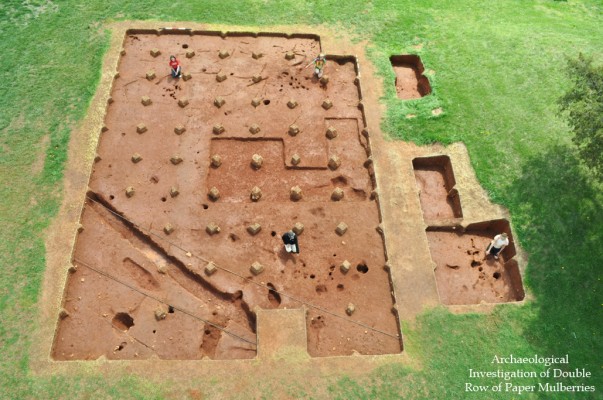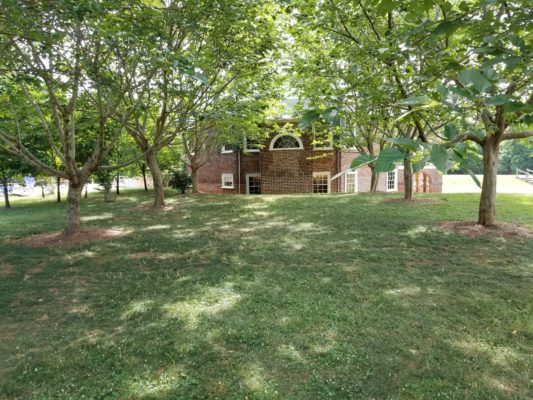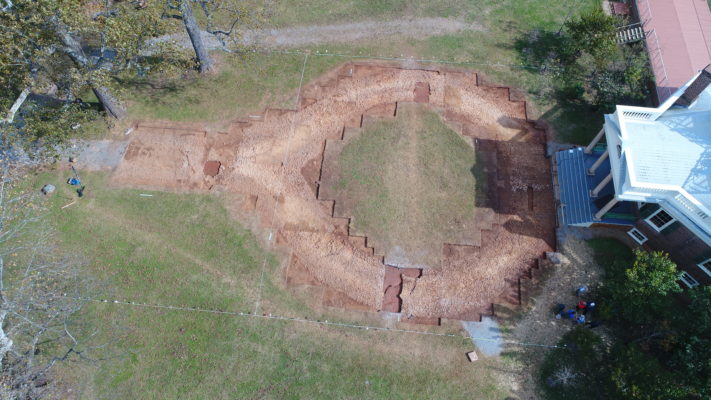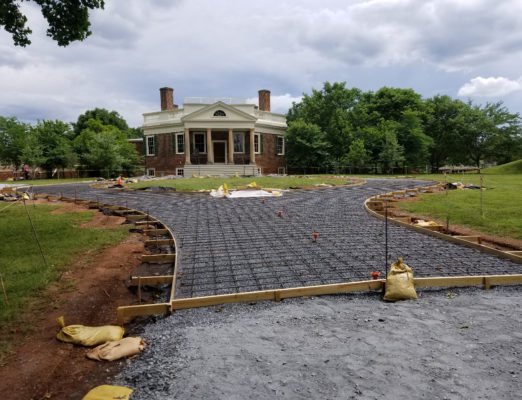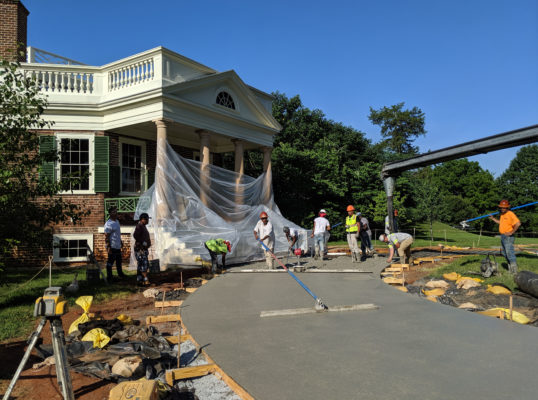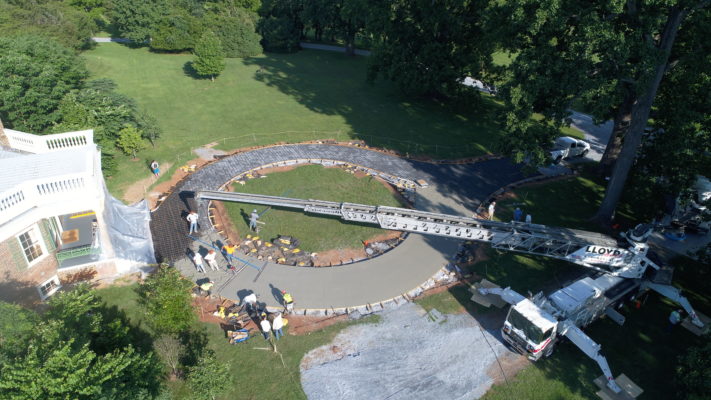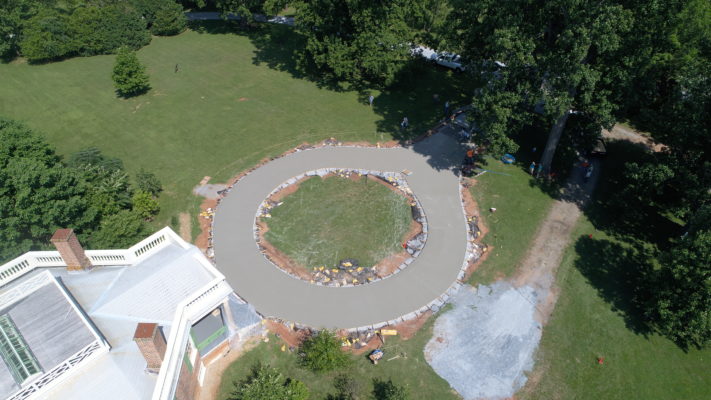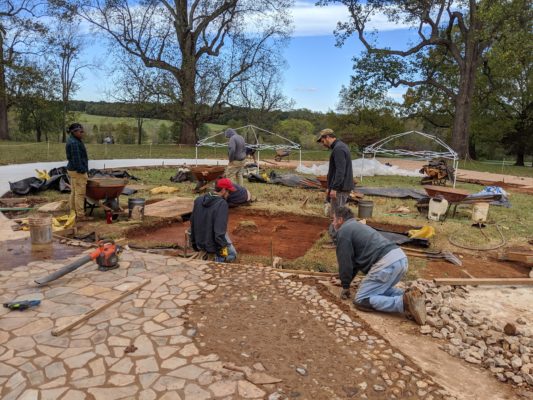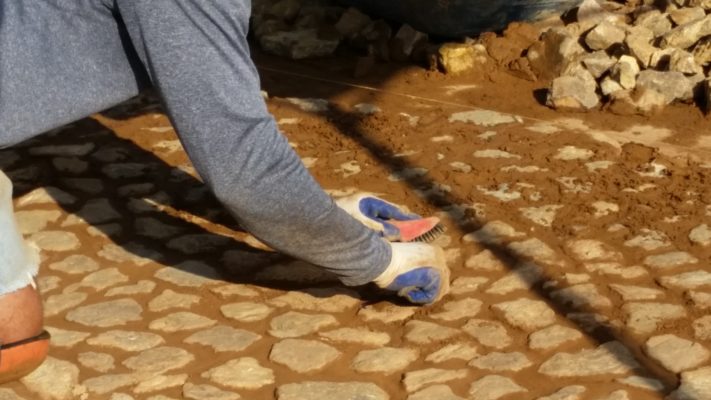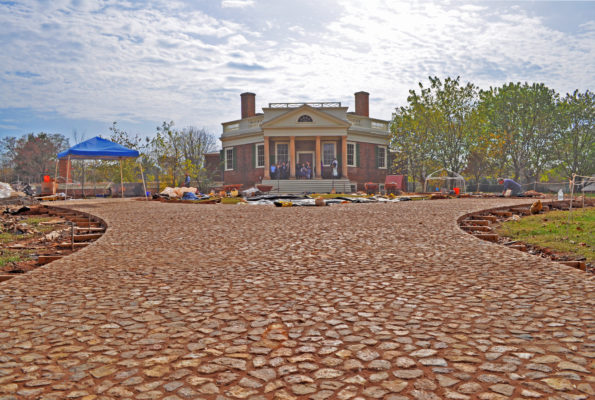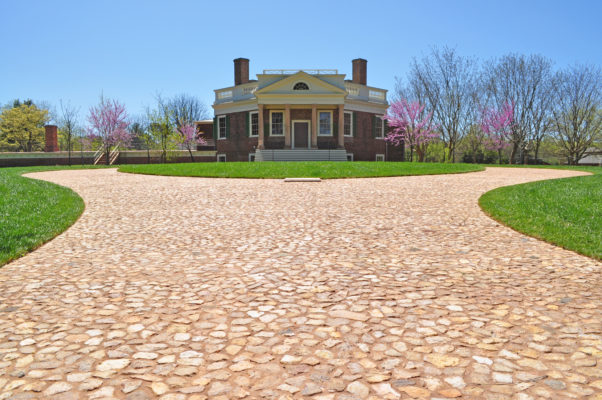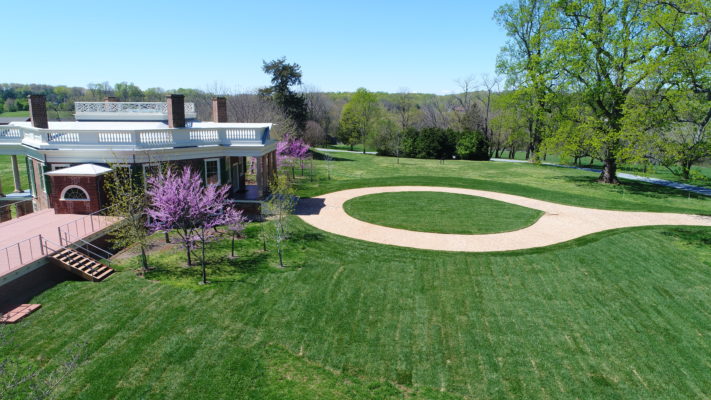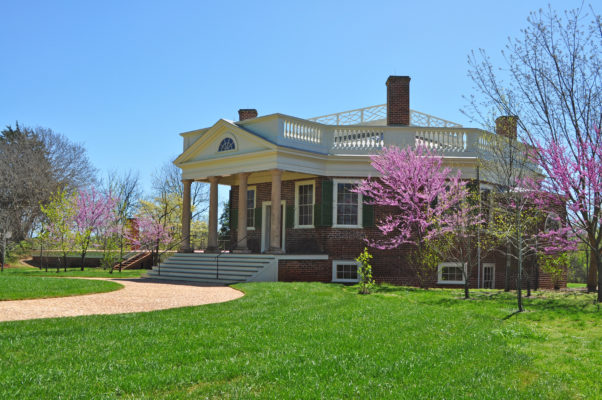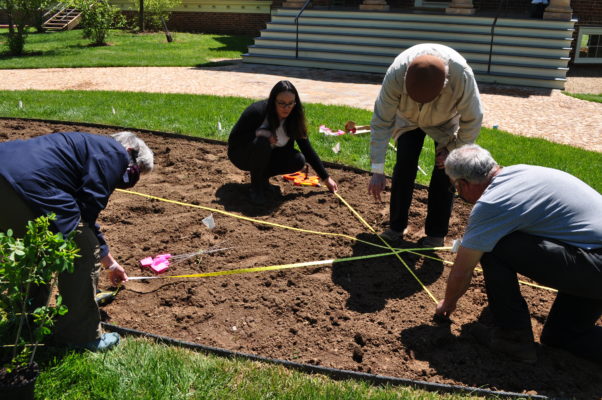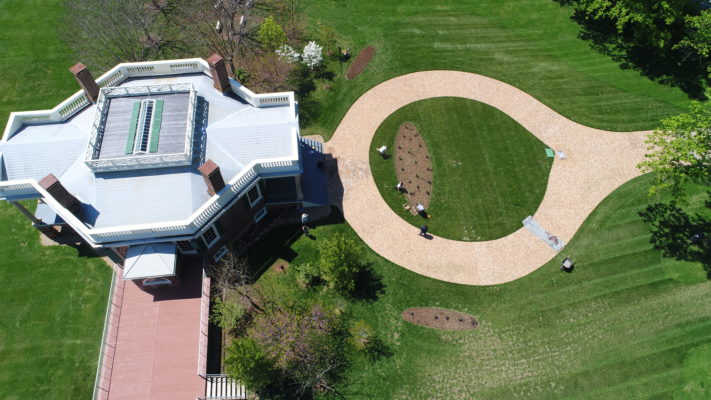Poplar Forest
Location
Forest, Virginia
Partners
The Corporation for Jefferson’s Poplar Forest
Charles Funk Masonry
Jeff O’Dell, Mountain Laurel Landscaping
Grelen Nursery
Bass Sod Farm
Lynchburg Ready Mix Concrete
T homas Jefferson used his 5,000-acre plantation at Poplar Forest as his personal retreat. In conjunction with Poplar Forest’s archaeologists, we completed three important projects to restore Jefferson’s landscape. After archaeologists determined the exact location of the original paper mulberries, the west allée once again fills the space between the house and the west mound and provides the shade Jefferson envisioned. Jefferson also planted four ornamental clumps to frame views of the house, two on the north side and two on the south. Again, after research and confirmation in the field of the exact locations, the front of the house is now framed by a pair of clumps. Restoring Jefferson’s carriage circle proved challenging and rewarding. Archaeologists unearthed the original early 19th century paved surface where laborers, most likely enslaved, gathered quartz rocks on site and pounded them into the clay soil. After preserving this historical remnant as a subsurface, masons installed a new surface designed to reflect the configuration and appearance of the original. Quartz rock found on a nearby farm perfectly matched the geologic profile of the Jefferson era stones and were crushed to the same size. The masons carefully set them in a bed of mortar colored to match the soil present between the stones in Jefferson’s time. The restoration of Jefferson’s oval beds completes the picture. Again, archaeologists found evidence of their locations and research revealed what Jefferson planted. The central and northeast ovals include historically appropriate roses and bristly locusts now grow in the northwest bed.

